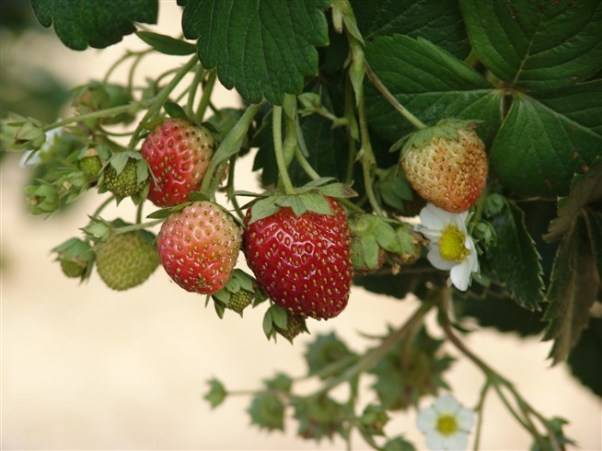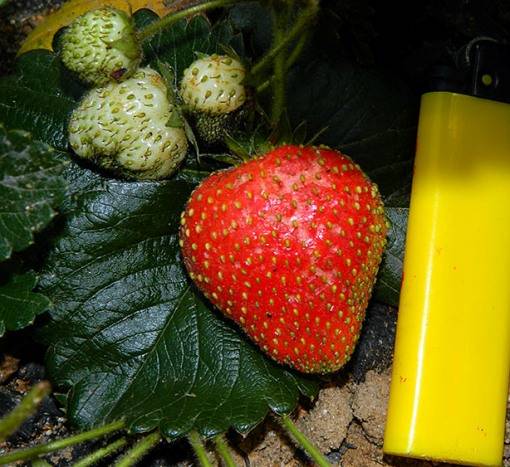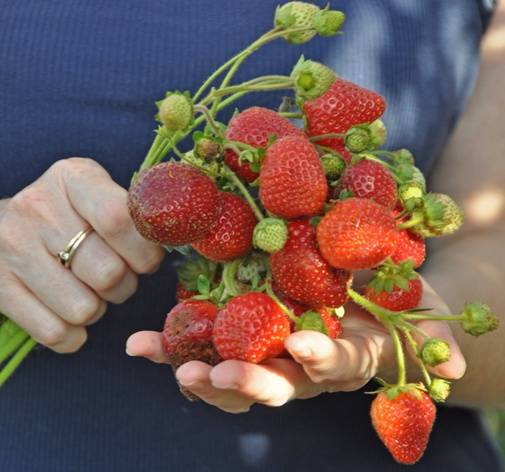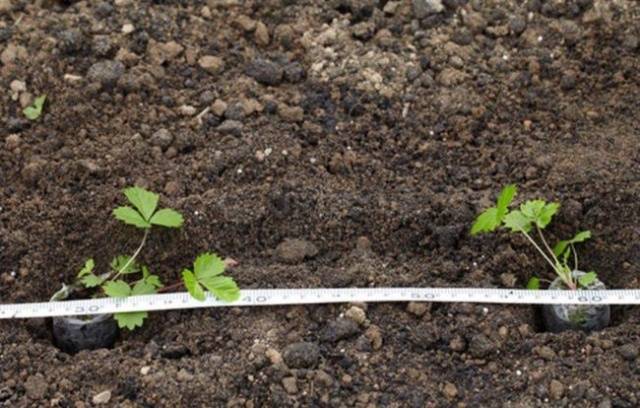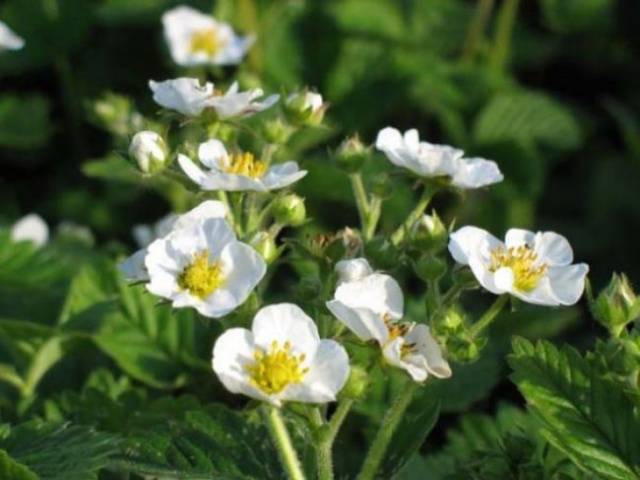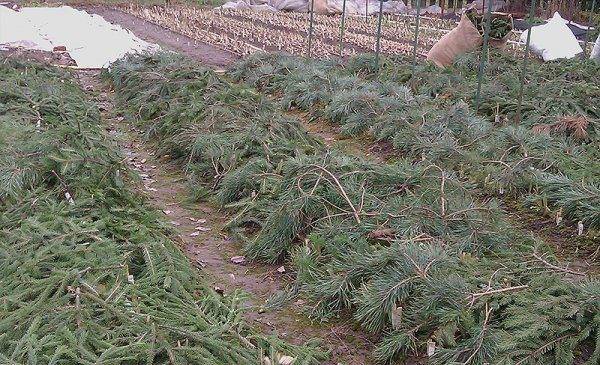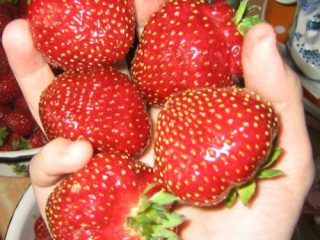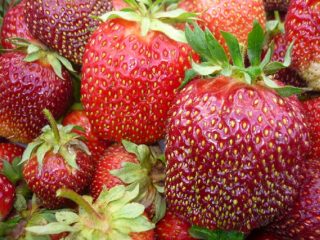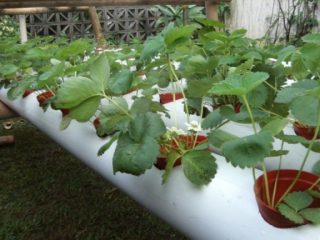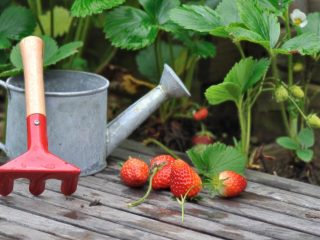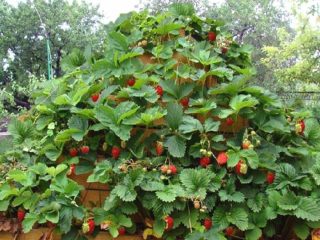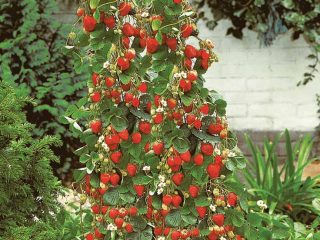Content
Strawberry Moscow delicacy belongs to the remontant hybrids of neutral daylight hours. It is able to grow and bear fruit at any length of daylight hours.
How to grow the variety, the features of propagation and care of plantings will be discussed in the article. And thanks to reviews and photos of Moscow Delicacy strawberries sent by gardeners, it is possible to learn better about the plant.
Features of the variety
Strawberry Moscow delicacy F1 is a product of Dutch selection. Remontant varieties, according to descriptions and reviews, bear fruit for a long time and produce several harvests during the growing season. The first fruits are harvested in the last ten days of June, and the harvest season ends in September.
Most often, strawberries of this variety are grown from seeds. Seed material of excellent quality, according to reviews from gardeners, is produced by Russian Vegetable Garden and Gardens of Siberia.
Description of the bushes
The strawberry variety Moscow delicacy is represented by compact bushes of medium size with a large number of rich green leaves with clearly visible teeth.
The developing stalks are strong and long.Semi-spreading inflorescences rise above the foliage. Gardeners use this feature of the variety to decorate their plots, growing strawberries in pots or containers. Each inflorescence contains a large number of snow-white flowers with bright yellow cores. In their place, ovaries are formed. There are practically no barren flowers.
Very few whiskers are formed. But what’s interesting is that the rosettes, having not yet formed a root system, already throw out flower stalks. Looking at the photo below you can see all the features of the description of a strawberry bush of this variety.
Description of berries
The fruits of the strawberry variety of Dutch selection are distinguished by large fruits, the weight of which reaches 60 grams. It is interesting that the first and last berries are almost the same in size. The largest harvest occurs in the second wave of fruiting.
Some gardeners note in reviews that the size of the berries does not correspond to the description. Most likely this is due to improper watering.
Strawberries are conical shaped with a blunt tip. The surface of ripe fruits is shiny, bright red with clearly visible seeds. Therefore, it seems that a large number of yellow lights “light up” on the strawberry. The pulp is juicy and elastic. When cut, the berry is light red or pink. There are no voids or white inclusions observed.
Delicatessen berries are sweet and sour. Sugar and acid go well together. But improper watering during the ripening period can cause bitterness. The fruits are fragrant, with notes of wild strawberries.
Characteristic
Only descriptions of Moscow delicacy strawberries, photos and reviews from gardeners are not enough to get an idea of the variety of Dutch selection. You need to know the characteristic features of the plant with its advantages and disadvantages.
Advantages
Strawberries have been grown for a long time, gardeners have managed to appreciate the high quality of the variety. Let's take a closer look at the positive properties of the variety:
- Terms of ripening. The MD hybrid ripens early; the first ripe berries begin to be picked two weeks earlier than other varieties, from the second decade of June.
- Productivity. Strawberries are high-yielding; on average, 800-1200 grams of delicious juicy berries are collected from a bush during the fruiting period.
- Transportability. The dense fruits of the Moscow Delicacy variety are grown not only on private plots, but also on large plantations. The point is the high shelf life of the fruit and the ability to transport it over long distances without losing its presentation and beneficial properties.
- Cultivation all year round. This variety of strawberries bears fruit well not only in open ground. In a greenhouse, a rich harvest of tasty and healthy berries can be obtained 12 months a year.
- Diseases and pests. Strawberries of the Moscow Delicacy variety have good immunity and are resistant to major strawberry diseases.
Flaws
Strawberries of Dutch selection have long enjoyed well-deserved popularity due to their advantages. Although the hybrid still has disadvantages:
- Due to low frost resistance, it is necessary to cover the plants for the winter.
- The growth of strawberries of Dutch selection is practically zero: only one tendril is formed for 7-8 bushes. Therefore, the Moscow delicacy hybrid propagates mainly by seeds.
- Strawberry varieties can be grown in one place for no more than 3-4 years, then the plantings require updating.
Reproduction
Like any strawberry, the Moscow delicacy can be obtained:
- seeds;
- sockets;
- dividing the bush.
But the variety produces too few rosettes; there are two ways left. The most common option is seed propagation. It will be discussed below.
The dates for sowing strawberry seeds are February, early March. First, the seeds are soaked in melt water or a growth regulator.
Place drainage in the container and fertile soil on top. You can use homemade soil or store-bought soil. Before sowing seeds, the soil is spilled with boiling water, in which it is advisable to dissolve several crystals of potassium permanganate. You can also bake the soil in the oven.
Strawberry seeds are not buried, but laid out on the surface of moist soil. Then the container is covered with glass or film and placed in a sunny window. Seeds take a long time to germinate, at least two weeks. And even after the sprouts appear, the shelter is not removed, only a small hole is left for ventilation.
At the stage of appearance of 3-4 true leaves, seedlings are picked. You need to work carefully, since the strawberry root system is represented by thin threads.
A very good way to grow strawberries from seeds is to sow them in peat tablets. To understand the meaning of the work, watch the video:
Before transplanting seedlings to a permanent place, the plants are hardened off and accustomed to new growing conditions. By this time, each strawberry should have at least six leaves and the first flower stalks.
Planting in the ground and care
To plant strawberries of the Moscow Delicacy variety, nutritious soil is required. In addition to humus, it is necessary to add sand.The ridges must be watered with hot water, adding a few crystals of potassium permanganate.
Seedlings are planted after positive temperatures have been established. But even in this case, it is necessary to install arches to cover the strawberries at night. Seedlings are planted at a distance of 40-50 cm; it is better to use a two-line planting method to facilitate further care.
Immediately after planting, you need to mulch the soil. This will eliminate the need for loosening and weeding of the strawberry variety. In addition, mulch retains moisture in the soil. Watering of the variety is carried out moderately, but drying out of the soil is not allowed, as this negatively affects the harvest.
Features of feeding
Bushes of the Moscow Delicacy variety need additional nutrition:
- At the beginning of the growing season, it is advisable to water the plants with a solution of ammonia to speed up the growth of green mass.
- During flowering, potassium fertilizers must be applied to the strawberries, but humus and wood ash can be used.
- To increase the formation of inflorescences, plantings should be sprayed with boric acid (1 teaspoon per ten-liter bucket).
- The Moscow Delicacy variety responds well to feeding with infusion of mullein and green grass.
Watering
Now let’s talk about how to properly water strawberries:
- Use only warm water.
- If it rains, watering is reduced; in hot weather, on the contrary, it is increased. But under no circumstances should you over-moisten the soil.
- It is better to do the work early in the morning before sunrise.
- While the strawberries of the Moscow Delicacy variety have not thrown away their flower stalks, they benefit from sprinkling. In the future, you need to water under the bush, trying not to get on the leaves and inflorescences.
- If possible, you can arrange drip irrigation.
Preparing for winter
Before covering, strawberries of the Moscow Delicacy variety are trimmed and fallen leaves are removed from the ground. After this, the soil is treated with special preparations so that the plants do not get sick in the spring.
According to the description, the variety from Dutch breeders has average frost resistance, so plants must be covered for the winter when grown in a risky farming area. To do this, you can cover the strawberry plantings with spruce branches and sprinkle soil on top. In winter, throw snow.


